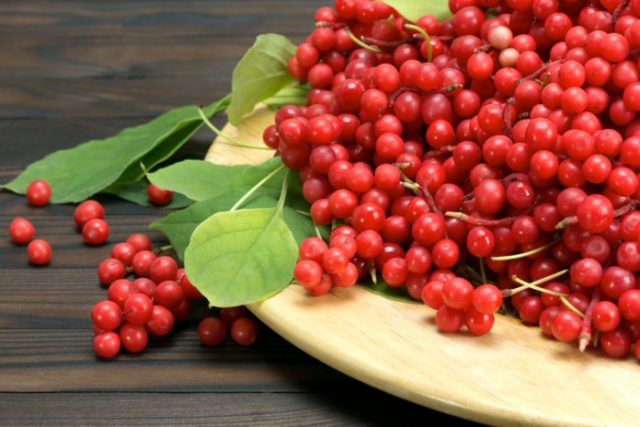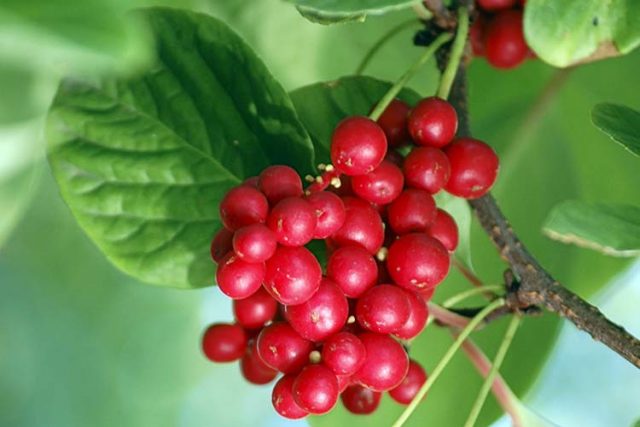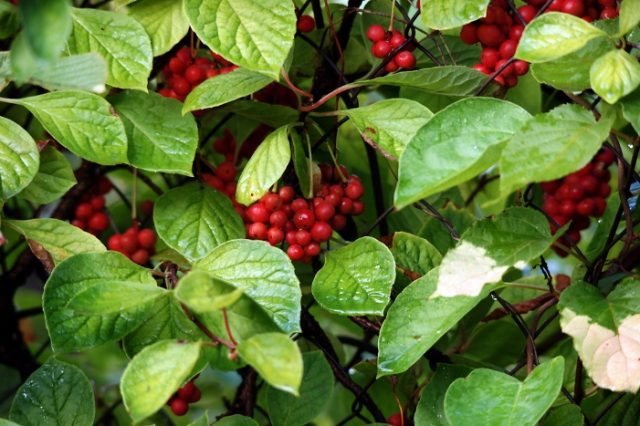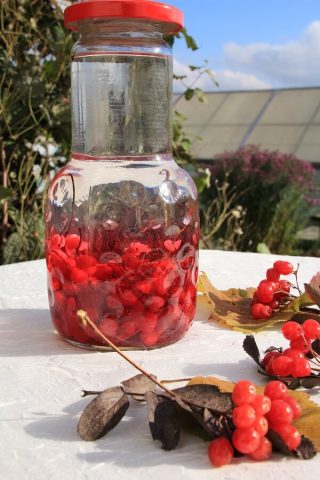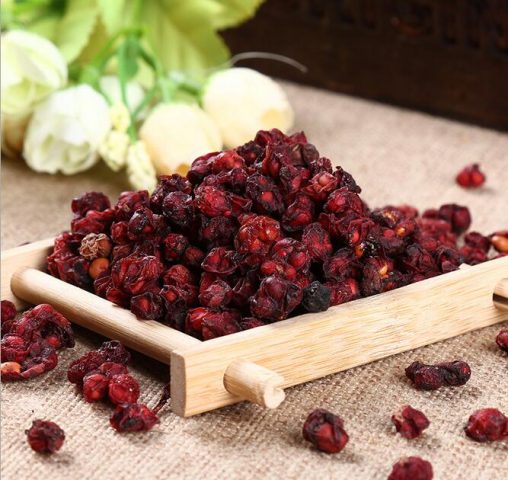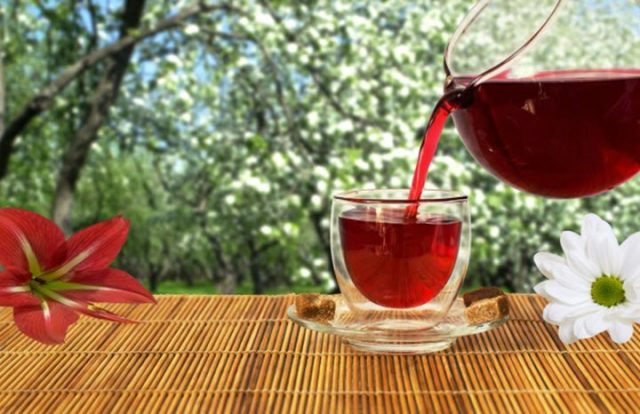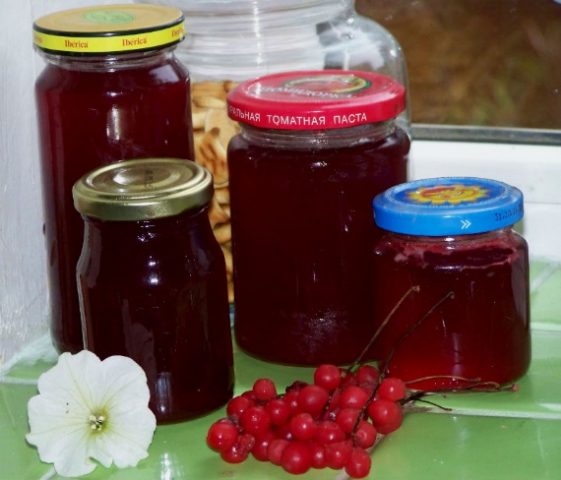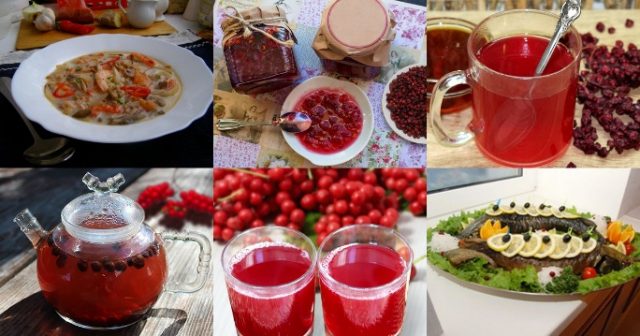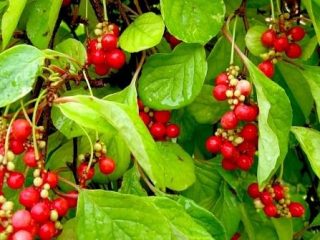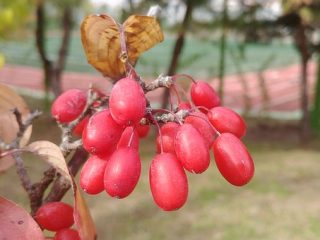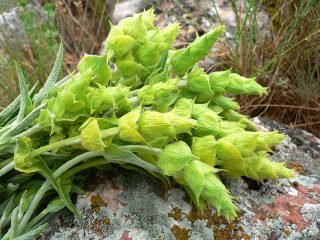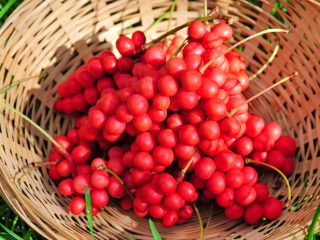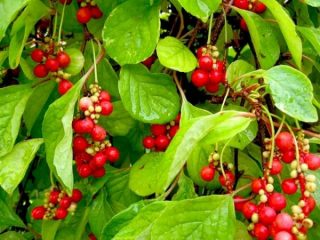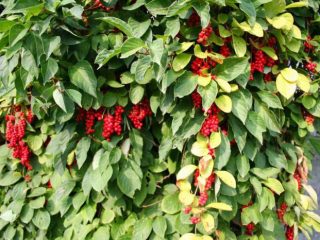Content
- 1 Chemical composition of Chinese lemongrass
- 2 Properties of Schisandra chinensis
- 3 What are the benefits of Chinese lemongrass?
- 4 What diseases does it help with?
- 5 How to use Schisandra chinensis
- 6 What can be prepared from Chinese lemongrass berries?
- 7 Chinese lemongrass during pregnancy
- 8 Contraindications
- 9 Reviews about the medicinal properties of Schisandra chinensis
- 10 Conclusion
The medicinal properties and contraindications of Schisandra chinensis have been known in the Far East and Southeast Asia since ancient times. Sometimes you can find another name for the vine - Chinese schizandra. In China, this plant replaced coffee, a stimulating drink of people from the Middle East. From ancient times to this day, China has been convinced that Chinese lemongrass is a miraculous remedy for men. And there is some truth in this. This part is hidden in the chemical composition of the plant.
Chemical composition of Chinese lemongrass
According to the traditions of Chinese medicine, all parts of the vine are used in Chinese lemongrass. Berries contain:
- acids: tartaric, citric, malic;
- vitamins: C, B₁, B₂;
- sugar up to 1.5%.
Berry juice supports the immune system in winter and supplies the body with essential vitamins.
The seeds contain caffeine analogues: schisandrin and schisandrol, which have a tonic effect on the body. In addition to these substances, the seeds contain up to 34% fatty oil and tocopherol.
Fatty oil contains acids:
- oleic;
- α-linoleic;
- β-linoleic;
- limit.
The essential oil contained in all parts of the vine is valued in perfumery for its delicate aroma. Most of this oil is contained in the bark of the vine.
The oil is a golden yellow liquid with a lemon scent. It includes:
- aldehydes;
- ketones;
- sesquiterpene hydrocarbons.
The substances contained in Chinese schizandra are antagonists of medications that cause drowsiness and depress the central nervous system. They enhance the effect of stimulants.
Depending on whether it is used competently or illiterately, Schisandra chinensis can bring both benefits and harm to the body.
Properties of Schisandra chinensis
The beneficial properties of Chinese lemongrass, according to Chinese medicine, can almost raise the dead. Along with ginseng. Expectations are dashed by harsh reality, but a set of vitamins really improves your well-being when you have a cold. Schisandrol and schisandrin stimulate and refresh the body during heavy mental work. The plant is often used as a central nervous system stimulant in dietary supplements.At the same time, stimulants from the seeds of the plant are no less harmless than caffeine. But if the body has already become accustomed to coffee and has stopped reacting, you can switch to a drink made from schizandra seeds.
What are the benefits of Chinese lemongrass?
Schizandra chinensis is used as an aid for a number of health problems:
- respiratory tract diseases;
- disruptions in the functioning of the cardiovascular system;
- liver diseases;
- with poor functioning of the adrenal glands;
- in case of malfunctions of the gastrointestinal tract;
- increased fatigue;
- for stress and depression;
- slight hormonal imbalance;
- for pain during menstruation;
- to stabilize a woman’s body during menopause.
Like any plant with healing properties, Chinese lemongrass should not be taken uncontrollably. In some cases, preparations from Chinese schizandra can only cause harm, despite their beneficial qualities.
Medicinal properties of Schisandra chinensis seeds
The main purpose of seeds in the medical field is to stimulate the nervous system and normalize high blood pressure. In China, the seeds are considered healthy and included in the daily diet to maintain high productivity. Ground seeds can be used to make a drink that replaces coffee. Especially if for some reason drinking coffee is contraindicated.
Medicinal properties of Schisandra chinensis berries
The use of fresh Schisandra chinensis berries is not usually practiced. They have too little sugar and taste bad. Dried berries are used as a medicinal and tonic. When dried, the fruits retain up to 0.6% vitamin C and schisardrin. After removing water from them, the percentage of sugar increases. Dry berries have a bittersweet taste. Used as a decoction in the following cases:
- stimulation of the heart;
- stimulation of the respiratory system;
- general tonic;
- adaptogenic;
- psychostimulant.
Translated into simple language: with increased fatigue and decreased immunity.
Medicinal properties of Schisandra chinensis leaves
Chinese schizandra leaves are used in herbal teas with other herbs:
- hibiscus;
- rosehip;
- jasmine;
- mate.
Like the fruits and seeds, the leaves also contain stimulants. You can drink leaf tea in the morning instead of your usual coffee.
Tea with Chinese schizandra supplies the body with various beneficial micro- and macroelements contained in the leaves of the vine. The beneficial effect of the leaves is the same as that of the fruit, but milder than that of the berries due to the lower content of stimulating substances.
Medicinal properties of Schisandra chinensis bark
The bark is not collected on an industrial scale for medicinal purposes, but in China it is used to make incense. Essential oil made from the bark has a beneficial effect on the nervous system. At the very least, it repels mosquitoes.
What diseases does it help with?
Preparations from Chinese schizandra are classified as general tonic and strengthening. But they can also be useful for some diseases:
- hypotension;
- impaired blood supply to the brain;
- chronic fatigue syndrome;
- vegetative-vascular dystonia;
- overwork.
It is prescribed for recovery after prolonged illness. Can be taken in situations where great stress is required during mental work. It is used as an auxiliary component for impotence due to neurasthenia.
Schisandra chinensis for blood pressure
The fruits of the vine are considered potent drugs. They are used for hypotension. Since Schisandra chinensis greatly increases blood pressure, it is prohibited to use it for hypertension.This can lead to a hypertensive crisis.
For hypotension, Chinese schizandra is consumed in the form of a decoction of berries, tincture or tea. Alcohol additionally increases blood pressure, although at a therapeutic dosage it does not have much effect.
Schisandra chinensis for diabetes
The fruits of Schisandra chinensis have been used to alleviate the condition of patients with diabetes. Chinese schizandra is used in courses of 1 month. Use juice, tincture or decoction. The fruits help reduce blood sugar, but are effective only for mild cases of the disease. In severe diabetes, they can only be used as an adjuvant.
Schisandra chinensis is used in different forms:
- tincture;
- decoction;
- Fresh Juice;
- cake
The tincture for diabetes is used 20-40 drops 2 times a day: morning and afternoon with water. The decoction is taken 1 tbsp. spoon in the morning and at lunch. The juice is taken 2-3 times a day, 1 tbsp. spoon. The dried cake remaining after squeezing the juice from the berries is consumed no more than 3 tbsp. l. in a day. When consuming pulp, its quantity is regulated based on how you feel.
You can also make your own medicinal pills with lemongrass:
- 150 g light asparagus root powder;
- 30 g mistletoe powder;
- 30 g lemongrass berry powder;
- a little honey to make a sticky mass.
Mix all the ingredients well and form them into balls. Take 3-5 pcs. 2-3 times a day. The product also helps with loss of strength and anemia.
For asthenic syndrome
Asthenic syndrome is more popularly known as chronic fatigue syndrome. Schisandra relieves fatigue and gives vigor. Some time after taking Chinese schizandra, a person feels a surge of strength and vigor.True, with asthenic syndrome, this condition does not last long, and you cannot constantly use preparations from lemongrass.
For vegetative-vascular dystonia
There is no such term in the modern classification of diseases. Its persistence is due to the fact that it is easier to make such a syndromic diagnosis than to look for the true causes of the ailment. Typically, the ailments for which such a diagnosis is made are associated with psychosomatic diseases. They can also be one of the signs of hypertension or endocrine disorders. This is also one of the symptoms of chronic ischemia.
If in case of psychosomatic diseases Schisandra is unlikely to cause physical harm (but no one knows what will happen to an overexcited nervous system), then in case of hypertension it will cause severe harm, even death.
This is the case when there is no need to take any stimulant drugs at all without serious research.
How to use Schisandra chinensis
The dosage of Chinese schizandra is determined by how you feel. General principles:
- 1-4 tbsp. spoons 2-3 times a day;
- 3 g of seed powder per day;
- 20-40 drops of tincture 2-3 times a day.
And when taking it, you need to consult a doctor. You shouldn’t count on the beneficial features of schizandra. Self-medication can be harmful.
How to brew Chinese lemongrass
If we are talking about ordinary tea with the addition of lemongrass, then there are no special rules. There is not so much Chinese schizandre in this tea that it can demonstrate its medicinal qualities. Therefore, tea is brewed in the usual way: 1 tsp. for 200-250 ml of water plus 1 tsp. on the teapot.
When making a decoction, take 10 g (the same teaspoon) of dried lemongrass fruits and pour a glass of hot water. Boil for 15 minutes, filter and add water to the original volume.
Recipe for tincture of Schisandra chinensis with vodka
An alcohol tincture is prepared from Schisandra chinensis at home. Dried lemongrass berries are poured with 70% alcohol and infused for 10 days. Ingredient ratio: 1 part berries to 5 parts alcohol. Take 20-30 drops 2 times a day.
When consumed in the evening, the tincture of Chinese lemongrass will fully demonstrate its medicinal properties. Especially those due to which the nervous system is stimulated, and insomnia will be ensured.
In the absence of alcohol, it is replaced with vodka. The recipe is the same.
Schisandra chinensis oil
The essential oil is used in aromatherapy and as an oral remedy. In the second method, the oil is contained in special capsules. Used in the same cases as other medicinal preparations from lemongrass. Capsules are classified as dietary supplements. Take them 1 capsule 3 times a day. Dosage for adults.
Tea made from leaves and bark
When preparing “pure” lemongrass tea using leaves and bark, take 15 g of dried vine per 1 liter of boiling water. The tea is infused for 5 minutes without touching the container. The beneficial features of tea are not only its invigorating effect. It is also used as an antiscorbutic.
Dried bark is good for winter. It retains the aroma better due to the large amount of essential oil in it.
Wine from Chinese lemongrass at home
The recipe is suitable for gardeners who have vines growing on their plot, since quite a lot of raw materials are needed. After squeezing the juice, what remains is the berry pulp/pulp. It can be dried and consumed in winter in this form, or you can make wine from it:
- 1 kg of cake;
- 2 liters of filtered water;
- 350 g sugar.
There are 2 ways to make wine.
First
Take equal parts of cake and water. Pour the pulp with water and leave at room temperature for 2-3 days. After this, the wort is drained and water is added, since the acid from the berries can stop the fermentation process. Sugar is added to the liquid at the rate of 1 part sugar to 3 parts wort.
The container is closed so that carbon dioxide formed during fermentation can easily escape, but oxygen does not enter the container. This is usually a standard "water lock". The wort is kept at room temperature until the fermentation process stops. It will be noticeable because bubbles of carbon dioxide will no longer appear in the container with water. The finished wine can be fortified by adding alcohol to it at the rate of 1 part alcohol to 3 parts wine.
Second
⅔ of the glass jar is filled with cake, the remaining space is filled with sugar. The bottle is covered with cotton wool or several layers of gauze and placed in a warm place for 2-3 weeks. After the expiration of the period, the resulting liquid is drained. The cake is again covered with sugar. This fermentation is repeated 2-3 times. At the last stage, all the resulting mash is filtered and poured into a clean container.
These products cannot be called healthy due to the simultaneous content of alcohol and substances that stimulate the nervous system.
What can be prepared from Chinese lemongrass berries?
All the same products can be prepared from the fruits as from the berries of other edible crops:
- jam;
- jam;
- jelly;
- fruit drink;
- soft drink;
- filling for cakes.
The juice of the berries is added to wines to give the latter a pleasant bouquet. But the productivity of lemongrass is relatively low, and abundant harvests occur only once every few years. Average yield: berries - up to 30 kg per 1 ha, seeds - up to 3 kg per 1 ha.
Chinese lemongrass during pregnancy
In large quantities, plant preparations are harmful to pregnant and breastfeeding women. Overstimulation of the nervous system when consuming Chinese schizandra can lead to miscarriage. During pregnancy and breastfeeding, doctors recommend avoiding the use of lemongrass.
Contraindications
Schisandra has quite a few side effects:
- tachycardia;
- allergy;
- insomnia;
- increased blood pressure;
- headache.
These phenomena in themselves do not refer to diseases, but are symptoms of other diseases. Because of this, lemongrass should not be used for diseases:
- epilepsy;
- hypertension;
- insomnia and circadian rhythm disorders;
- problems with cardiac activity;
- too excitable central nervous system;
- liver diseases;
- infectious diseases;
- allergies to any component of the plant.
Pregnancy and lactation are not diseases, but the use of lemongrass in these conditions is not recommended. It should not be given to children under 12 years of age.
Reviews about the medicinal properties of Schisandra chinensis
Conclusion
The medicinal properties and contraindications of Schisandra chinensis are known today not only to official and Chinese medicine, but also to ordinary gardeners. Many people grow this oriental vine in their dacha. It withstands frost well and does not create any particular difficulties in growing. Products made from berries yourself are a good vitamin boost in the winter, when you want to hibernate.

